The DaimlerChrysler era of Chrysler history is not one in which enthusiasts look back with fondness. Cars built by Chrysler and its brands back then were known for their hard plastic interiors, aggressive cost-cutting, and bizarre design decisions. But not all of its products were like this. One was so good it came perhaps a decade or two too early. That car was the original Chrysler Pacifica. This tech-heavy crossover was supposed to usher in a luxury rebranding for Chrysler and totally failed at the job. Yet, despite what you might have heard back then and even today, the Pacifica is actually cooler than you might think.
Back in May 1998, Chrysler and Daimler-Benz tied the knot, moved in together, and started sleeping in the same bed. The new DaimlerChrysler was hailed as a “merger of equals” that painted the married brands as titans that were going to benefit each other. On paper, DaimlerChrysler seemed like a great idea. One of the main benefits of the merger was that Chrysler would lend its expertise in mass-market automobile manufacturing while Mercedes-Benz would offer its cutting-edge technology and refined luxury. Together, this was supposed to lead to higher quality and more luxurious mass-market cars, benefiting everyone involved.
In practice, the DaimlerChrysler era was a disaster of comedic proportions. As David Tracy explained last year, practices like Material Cost Management had Chrysler cutting costs way too far, leading to those grungy, infamous interiors. Meanwhile, the culture at DaimlerChrysler left many feeling like Daimler was sucking Chrysler dry to keep itself afloat.
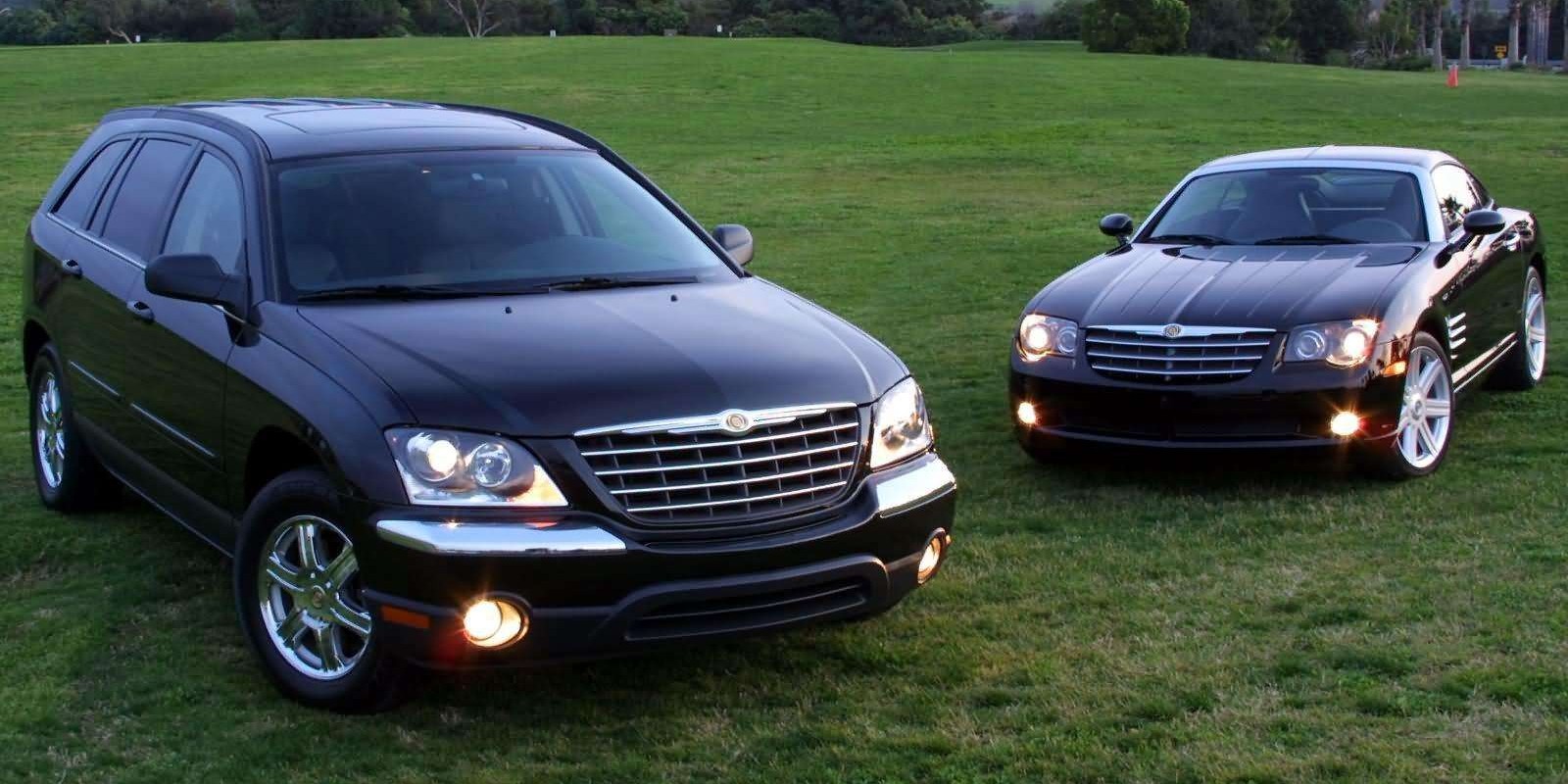
Harvard Business Review suggests that the whole deal just sort of sucked for everyone:
In theory, the Daimler-Chrysler combination should have yielded two very potent sources of competitive advantage. The first was a cohesive global brand architecture. Consider Toyota. Its brand structure is extremely clear and logical: Lexus for the high-end buyer, Toyota for the middle-income family, and Scion for the hip young. The segmentation makes sense and the progressions between segments are natural ones. Young people find partners, have children, and buy minivans; people with money move up to luxury vehicles.
The second potential source of competitive advantage lay in creating a coherent platform strategy built on the economic logic of parts sharing. Because the cost of developing new vehicles is so great, car companies design “platforms” from which they create families of vehicles. They also try to share parts between platforms to drive economies of scale in manufacturing. See two papers on the history of the US and European automobile industries and platform strategy — 1, 2 — that I wrote with Nathan Simon.
Realizing synergy in brand architecture and platform strategy would have required deep integration of Daimler and Chrysler. German engineers would have had to design cars using parts created by American engineers and vice versa. The management team would have had to develop a global brand strategy and associated logic of competitive positioning. None of this happened. They ran the two organizations as separate operations. When major shifts in the environment (rising gas prices and the move away from SUVs and trucks) kicked out the blocks from under Chrysler’s recovery, it was both necessary and possible for them to part.
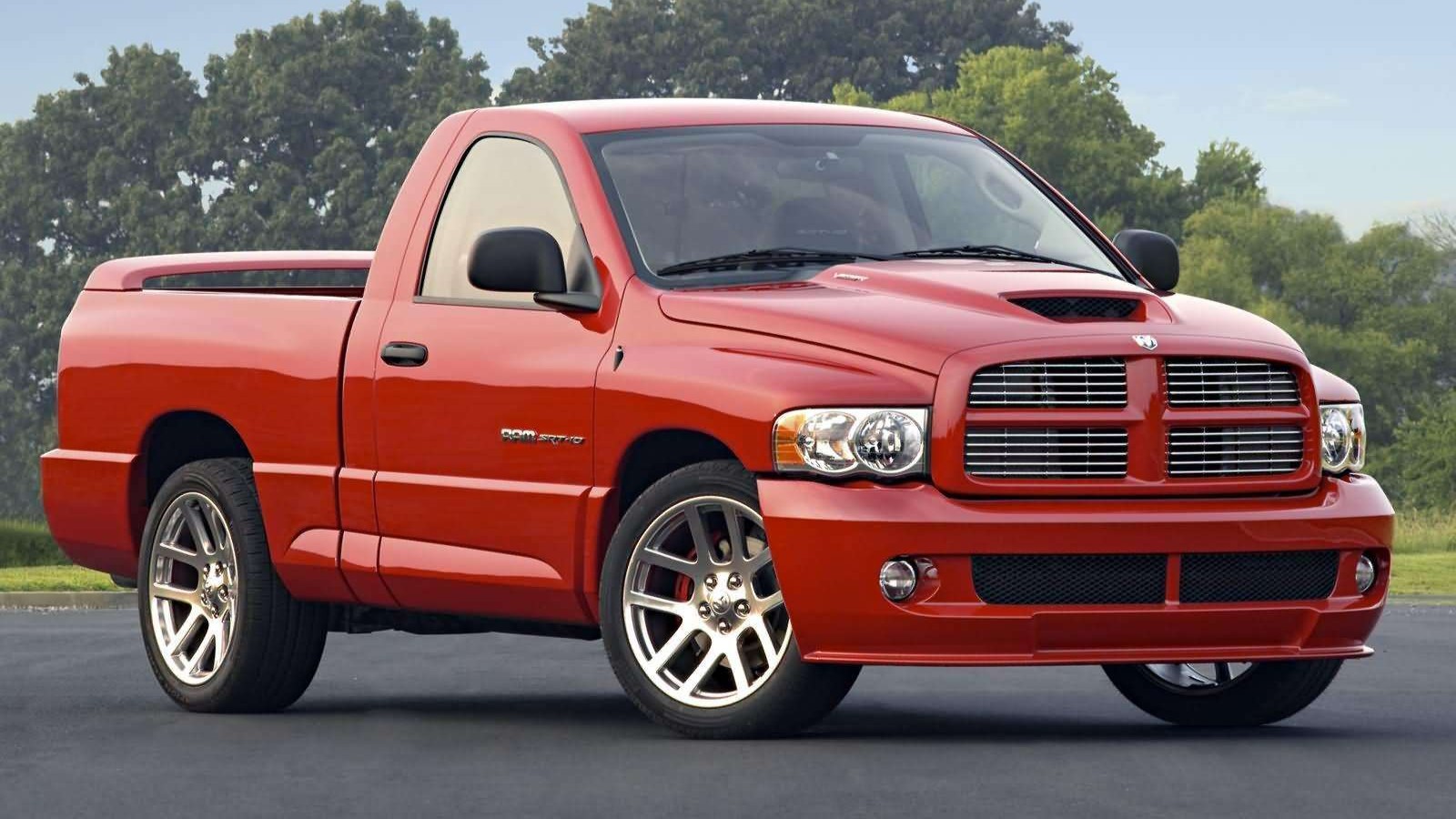
Daimler chairman Jürgen Schrempp called the merger a “marriage made in heaven.” It wasn’t, but not everything was bad! The DaimlerChrysler era created the epic Viper-powered Dodge Ram 1500 SRT-10. It also gave us the beloved Chrysler LX platform, which had pieces of German flair under its skin.
The Chrysler Pacifica and the Chrysler Crossfire were intended to be demonstrations of the benefits of DaimlerChrysler. Buyers would get to enjoy a vehicle with the best that both Chrysler and Mercedes-Benz could offer in one package.
Today, it might be hard to look back at the Pacifica with a positive view. It doesn’t help that so many of the Pacificas that remain on the road today have gaping rust holes, missing panels, and the headlight equivalent of cataracts. These things have been beaten up so badly and depreciated so far that it’s not even that hard to find a running example for $1,500.
The Pacifica was thought to be destined for something greater. This was the car that was supposed to lead Chrysler into an era of American luxury. It didn’t, but maybe that doesn’t make the Pacifica so bad.
Chrysler And Mercedes Get Weird
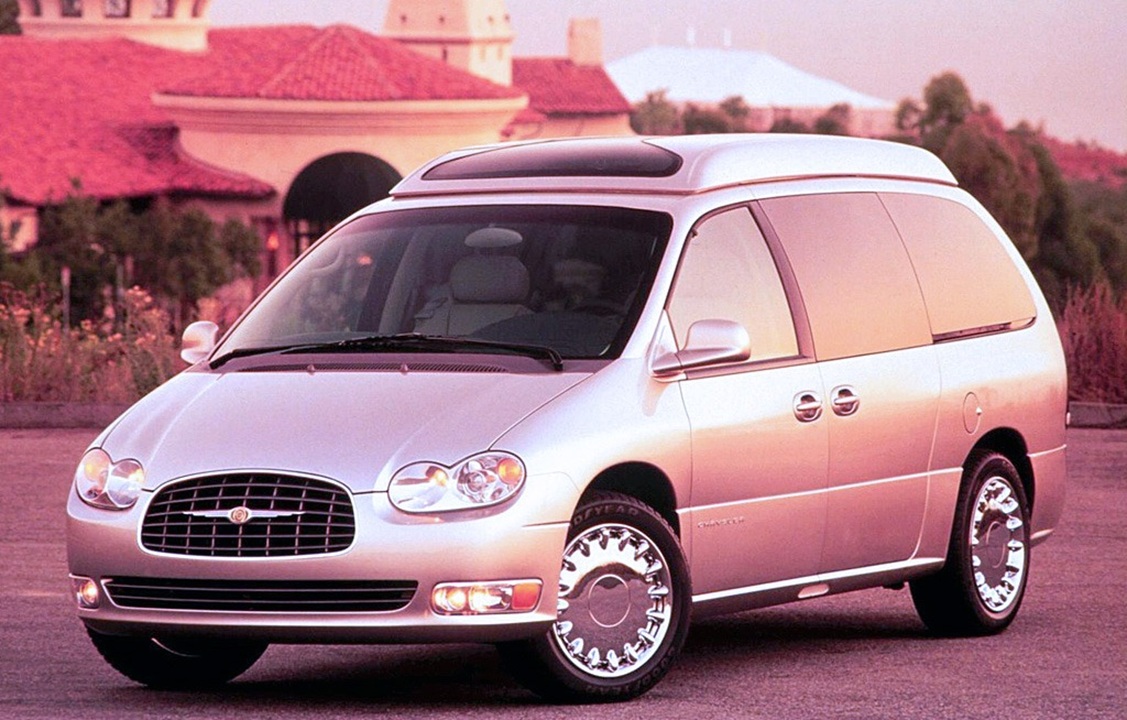
In 2003, Autoweek reported that the Pacifica’s development traced back to Auburn Hills in early 1999. DaimlerChrysler was riding high on the explosive interest in the Chrysler PT Cruiser. Meanwhile, Chrysler’s minivans were still flying off dealership lots. Even stock traders got in on the frenzy, pushing DCX above $100. It really seemed like this merger thing was off to a great start.
Under the hood, however, was some of the chaos that I mentioned later. The Germans in Stuttgart and the Americans in Michigan now had to figure out how to meld each other’s cultures and technologies to create the next big thing. SUVs had proven themselves to be winners in the marketplace. Meanwhile, a new contender had entered the ring in the form of the crossover. Many automakers had begun to learn the same thing: that moving forward meant investing in large vehicles. Autoweek continues:
Well before the merger was complete, planners from both companies had peeked at each other’s product portfolios, with each partner discovering that the other side had similar designs on the sports tourer of the future. After the merger, the most cost-effective route may have been to build two different wagons—Pacifica and [Grand Sports Tourer]—off one strong platform. But the idea of a budget Chrysler badge adorning Mercedes hardware, or worse yet, a Mercedes marque appearing on a mere Chrysler, was far more than the German end of DaimlerChrysler was ready to accept—at least publicly.
Even after Chrysler and Mercedes revealed their surprisingly similar sports tourer concepts at the 2002 Detroit auto show, both sides continued to deny any product development collusion, and to this day claim that both vehicles were developed independently.
While that technically may be the case, the seeds of sharing were sown in the early stages of GST development when the Germans, uncertain how to proceed with their next product for the North American marketplace, reached out for guidance from Chrysler in what was likely one of the first concrete steps toward taking advantage of the engineering, product development and marketing strengths inherent in the partnership.
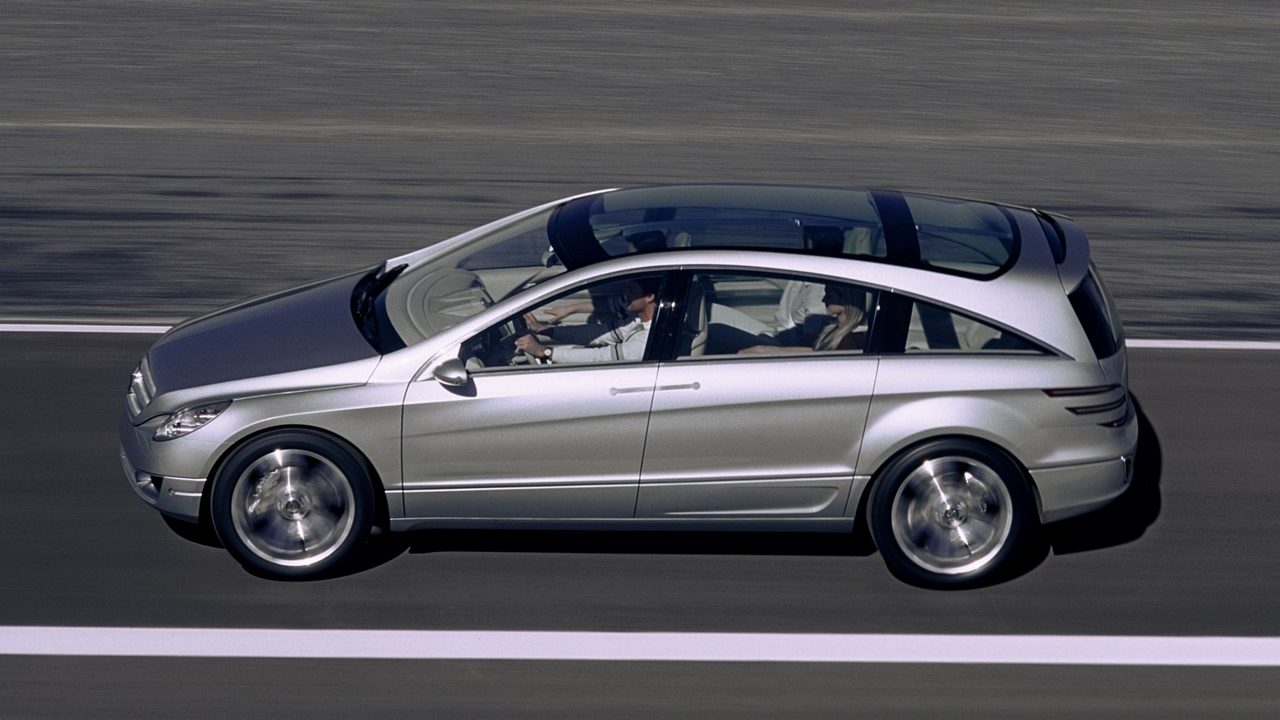
As Autoweek notes, Mercedes-Benz had its M-Class SUV in America, which turned out to be a success. Naturally, the Germans wanted to follow the sport utility up, but Germany is an ocean away from America. How would the engineers in Stuttgart know what to design for Americans? Well, they got an American, of course! Mercedes-Benz reached out to Chrysler for help, and mechanical engineer Mike Donoughe rose to the task.
Donoughe had a pretty great record at Chrysler, with 16 years at the company working on projects like the powertrains for Chrysler’s cloud cars (the Chrysler Cirrus, Dodge Stratus, and Plymouth Breeze). In Germany, he’d help lead the way for the sequel to the Mercedes-Benz M-Class. This was the Grand Sports Tourer, or GST, which would go into production as the glorious R-Class.
Over in America, Chrysler design director Joe Dehner led the team behind what would become the Pacifica. Both teams had come to the same conclusion that while minivans were popular, the next big thing was the sports tourer of the future.
Chasing Trends
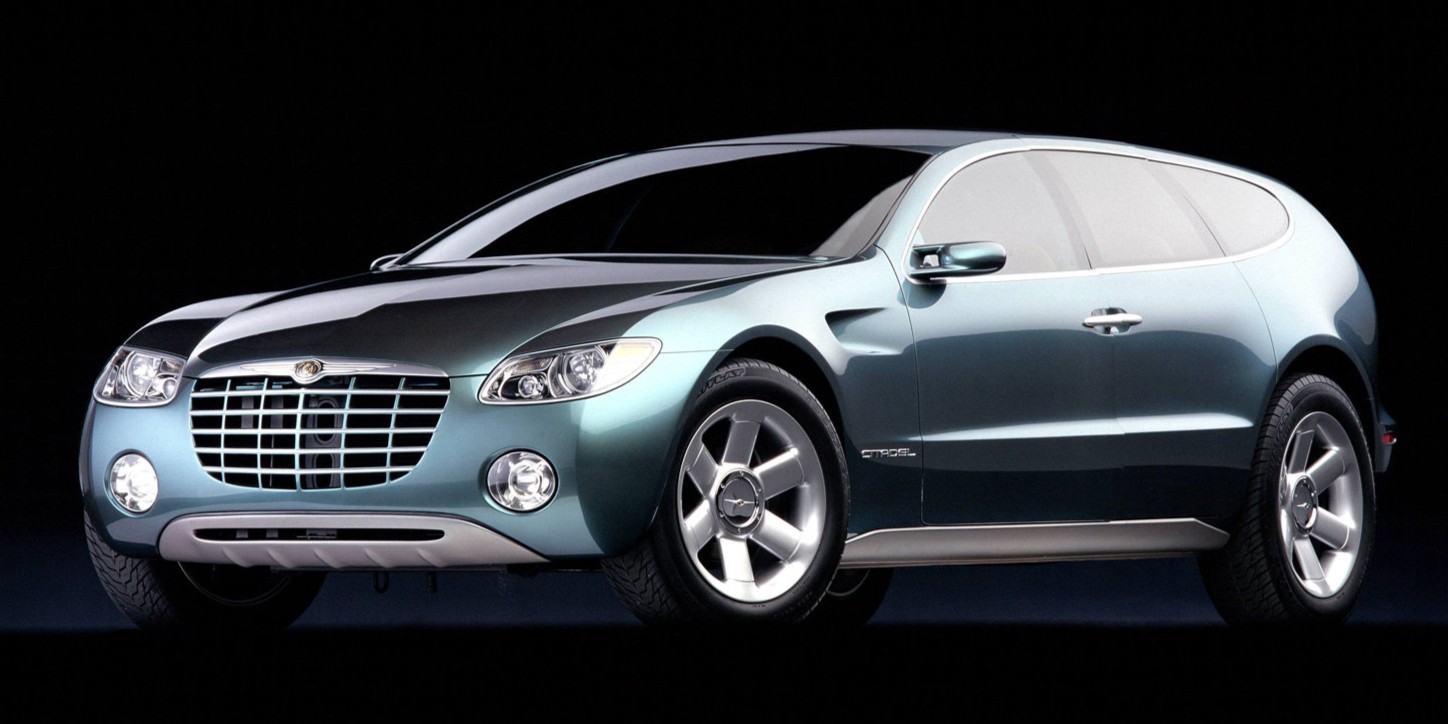
Now, if you look at the R-Class and Pacifica next to each other, I wouldn’t fault you for assuming that the Pacifica was an R-Class in a cheaper suit. Both sort of look like minivans without sliding doors, and both leaned hard on the idea of being a multipurpose, multi-category vehicle. But this wasn’t the case. The R-Class and the Pacifica ride on two entirely different platforms and, as Autoweek notes, do not share parts. The two teams might have compared notes, but these are not at all the same vehicle.
You might also find it hard to put a finger on what, exactly, the Chrysler Pacifica is supposed to be. This is because it’s trying to be multiple vehicles in one. Autoweek noted that Chrysler’s team knew what it wanted in its sports tourer. The vehicle would be tall and have the stout appearance of an SUV. At the same time, the team wanted this vehicle to swallow people and cargo like a minivan, but handle like a car.
That last demand dictated what the new vehicle would ride on. Body-on-frame platforms back then were rugged, but not exactly graceful in the corners. As Autoweek wrote, Chrysler’s solution was to borrow its unibody minivan platform. Reportedly, one of the first prototypes was little more than a minivan with a chop-top roof and standard car rear doors. This prototype had the beltline of an SUV, but it was concluded that this looked too much like a minivan.
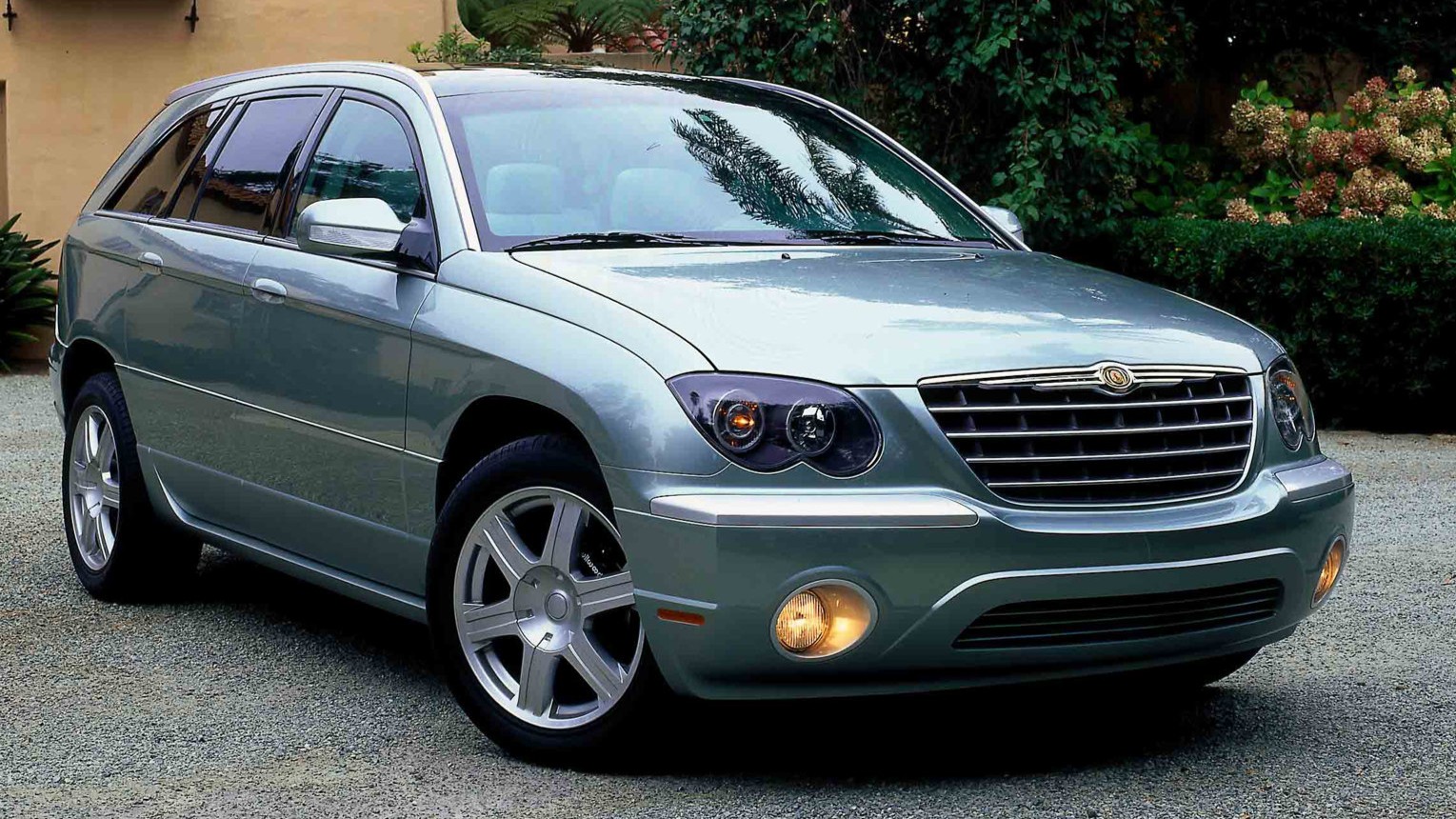
Next, the designers went the other direction, instead building a jacked-up wagon on Chrysler’s LH platform. Unfortunately, this didn’t have the burly SUV aesthetic that the team had been looking for.
Autoweek notes that this led the development team to a conclusion. They couldn’t just modify an existing vehicle to get what they wanted. Instead, they’d take the minivan platform and use it to create something new. This, Autoweek notes, is how Chrysler used the Neon’s platform to design the PT Cruiser.
This time, Chrysler’s team got what they wanted: a large three-row vehicle with the presence of an SUV, the practicality of a minivan, and the dynamics of a wagon. But this was only half of the Pacifica equation.
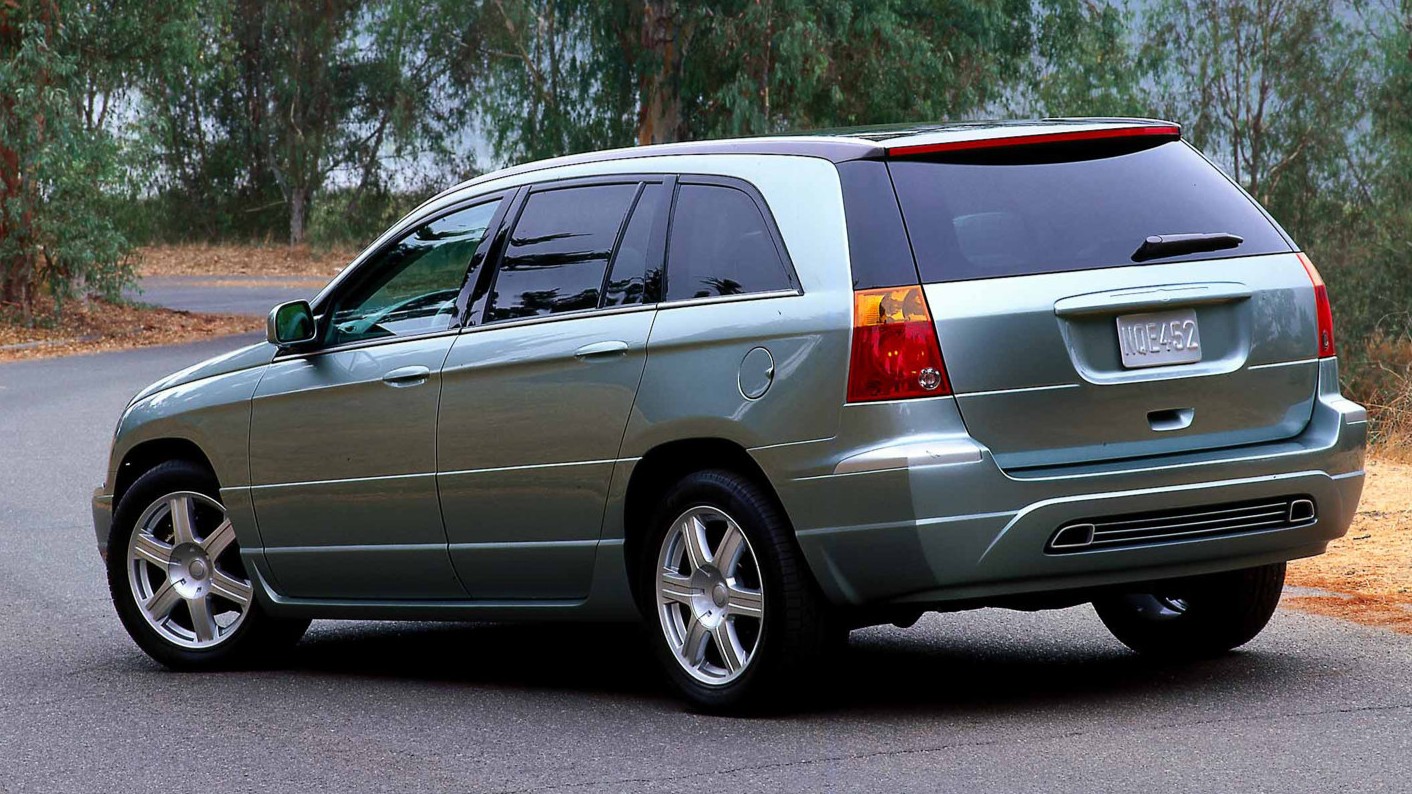
Autoweek notes that by 2002, the temperature in the room was pretty hot as some had already felt that Chrysler and Daimler hadn’t merged so much as the latter took over the former. Chairman Jürgen Schrempp replaced himself with Dieter Zetsche in an attempt to bring down the temps. One of the biggest changes new management brought was allowing Chrysler to raid the Mercedes-Benz parts bin while also giving the Chrysler team additional access to Daimler’s vast resources. Autoweek continues:
“I really understand the market for both vehicles,” Donoughe notes. He brings a slew of intangibles back to Auburn Hills, including a direct link to engineers on the GST project whom he doesn’t hesitate to call on for assistance with Pacifica. A direct beneficiary is Pacifica’s chassis, which is tuned in a driving simulator in Berlin that Donoughe used during his Mercedes tour. The six-month process results in a unique front suspension and—gasp!—a five-link rear suspension borrowed directly from the Mercedes’ E-Class and modified for the Pacifica. Interior refinement also gets a boost from Mercedes, from the company’s trademark, intuitive door panel-mounted power seat, pedal and steering wheel adjustments, to the quality and refinement of materials. Donoughe’s Teutonically tuned sense of precision and detail leads to other changes, not the least of which is his demand for a quieter analog clock when, during a test drive, he traces a recurring instrument panel clicking sound to the minute-by-minute movement of the clock’s big hand.
A Minivan, Wagon, And SUV In One
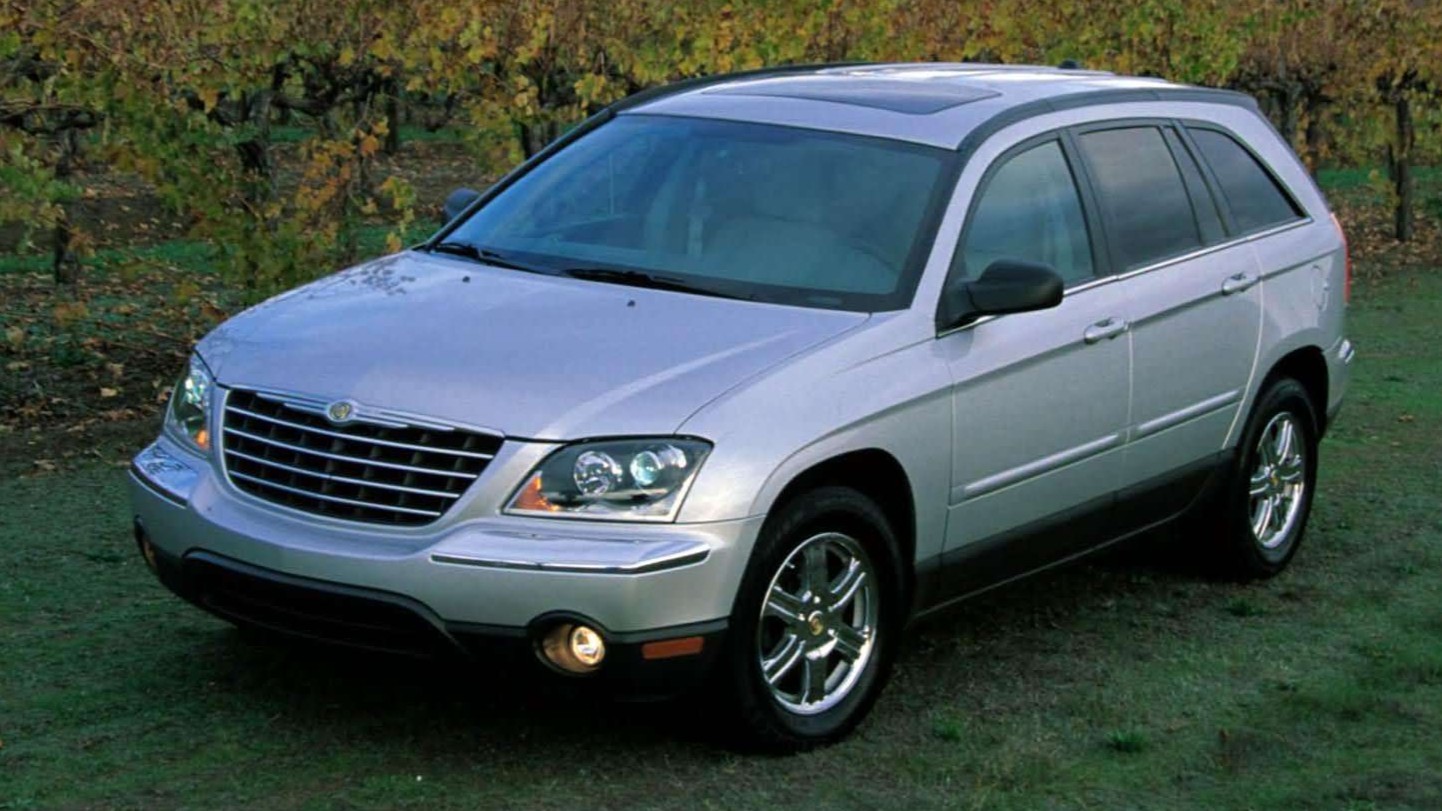
The Pacifica would go on sale in early 2003 as a 2004 model. The first Pacificas shot for the stars. Available features included first and second row heated leather seats, laminated glass, a 10-way power driver seat, dual-zone climate control, a power sunroof, a navigation screen in the instrument cluster, a power tailgate, a DVD player, satellite radio, 5.1 surround sound, tire pressure monitoring, and so much more. These were huge for a Chrysler back then. This thing even had power-adjustable pedals with a memory function, something that Chrysler said was the first in the industry.
The Pacifica also rode on a pretty smart platform. Power came from a 3.5-liter 24-valve V6 building 250 horsepower and 250 lb-ft of torque, which was bolted to a four-speed automatic with a manual shift function. A five-link suspension with load leveling and height control took care of suspension duties in the rear, while struts handled the front. The Pacifica had a base price of $28,845 in 2003, or a minimum of $32,300 with AWD. Pile on the long list of options, and you were knocking on the door of $40,000, or big money for a Chrysler back then.
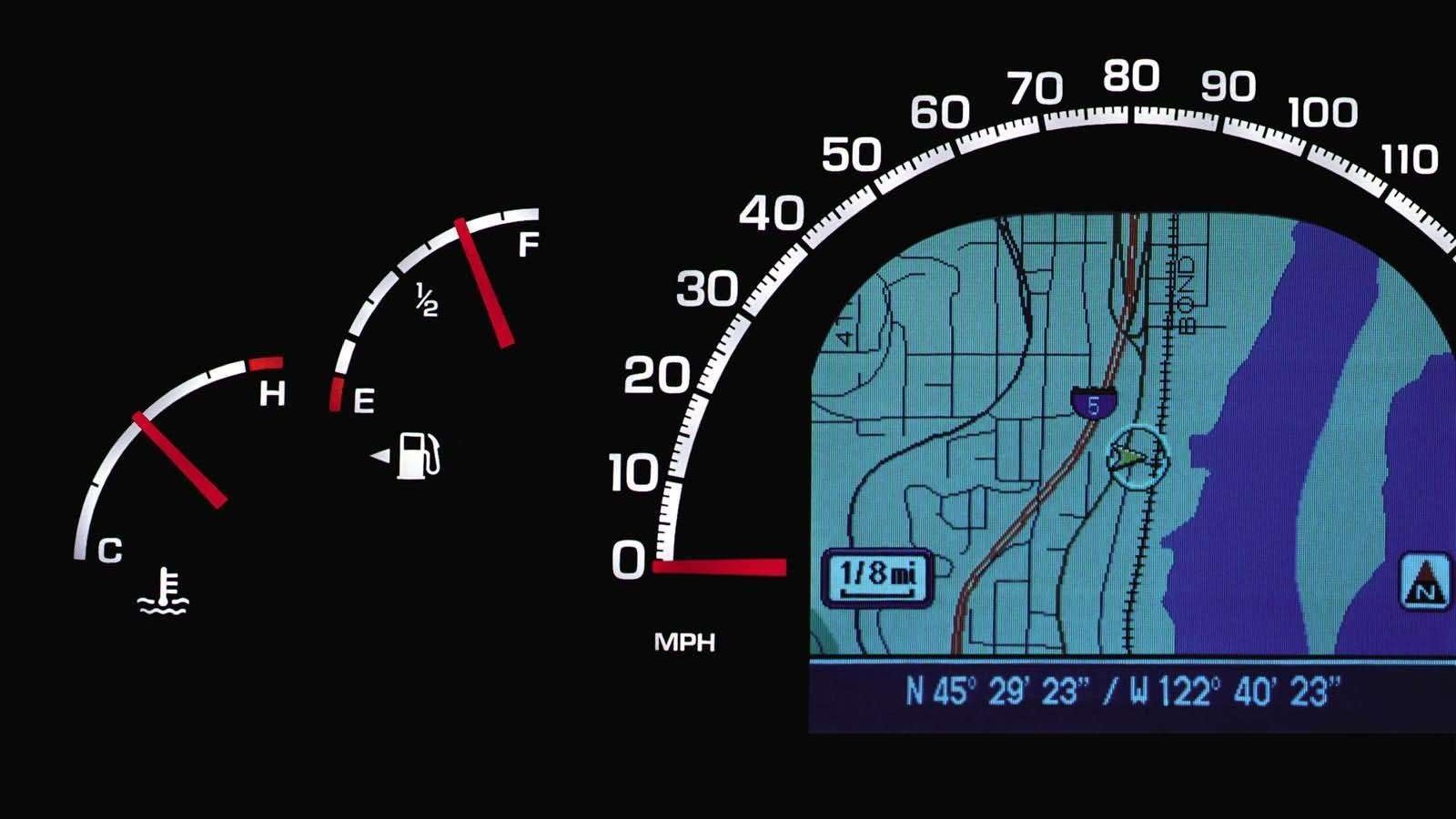
All of this was huge. Also massive was the cost. Chrysler said that it spent 30 months and under $1 billion developing the Pacifica. This investment was only the beginning, as Chrysler saw itself moving upmarket into luxury territory. Chrysler saw itself as being successful here, too, projecting sales of 100,000 units per year for the Pacifica.
This was ambitious. Remember that, at that point in time, Chrysler had been slinging cars like the Sebring, PT Cruiser, and Voyager, and had rides like the cloud cars and the Neon in its past. These cars were perfectly fine, great even, but luxurious they were not. Chrysler had built itself a reputation for selling affordable trendy cars. Now, it wanted you to think it was going to be one of the next big things in luxury.
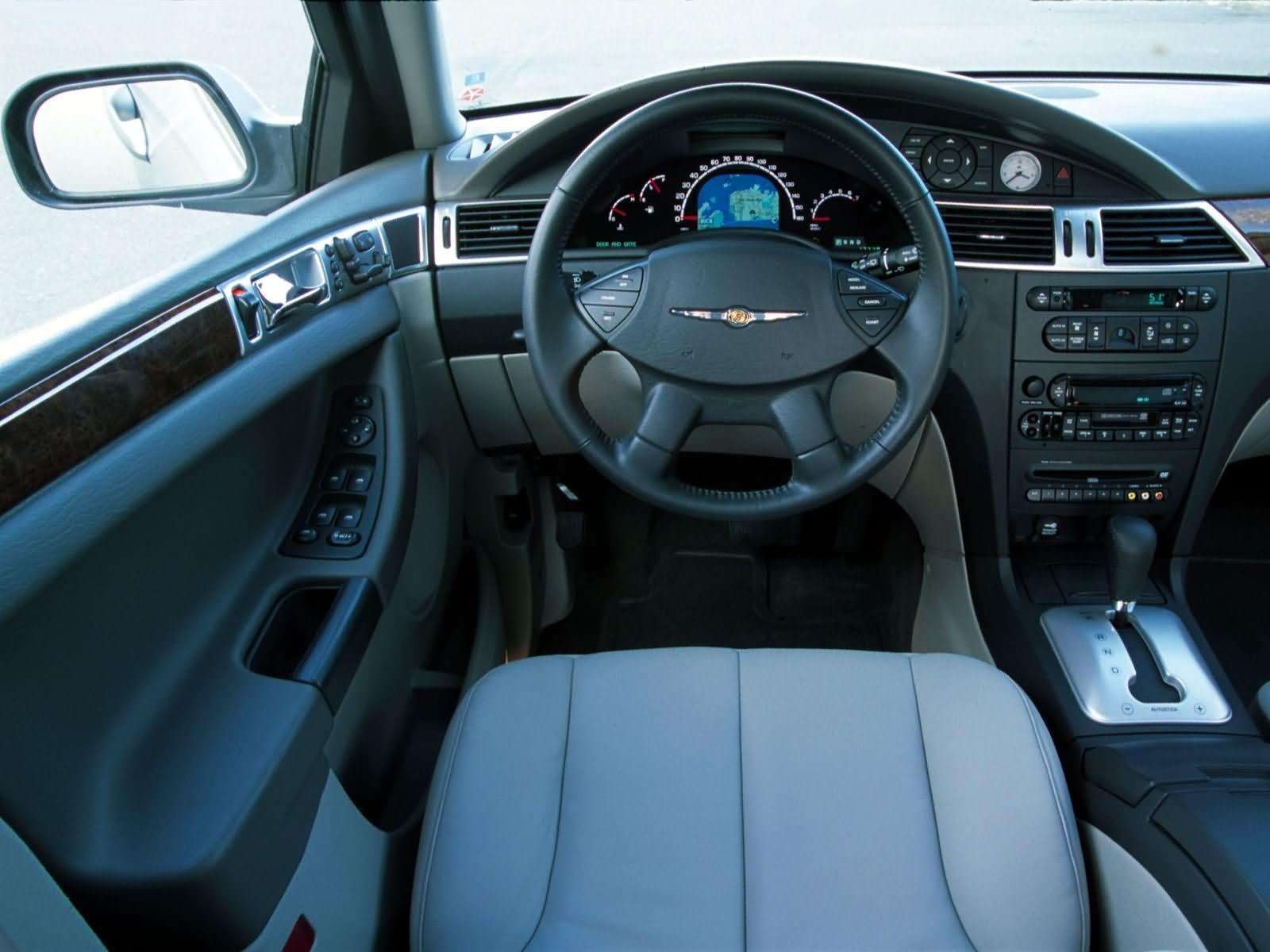
Chrysler knew this was going to be an uphill battle. Thus, in 2003, Chrysler spent a reported $14 million signing a contract with superstar Celine Dion to help Chrysler push its image upmarket.
Unfortunately, in classic DaimlerChrysler style, the Pacifica journey was filled with missteps. One was that, for whatever reason, Chrysler never touted the Pacifica as having Mercedes-Benz technology. If you go through the 2004 Pacifica’s 11-page press release, you will find no mention of Mercedes-Benz at all and only a passing mention of Daimler. It’s the same deal in releases archived at Stellantis. One Internet rumor is that DaimlerChrysler didn’t let Chrysler tout the Mercedes tech of the Pacifica for fear that buyers would run to a dealer to buy a cheaper Pacifica than buy a Mercedes. I’ve found no confirmation of this.
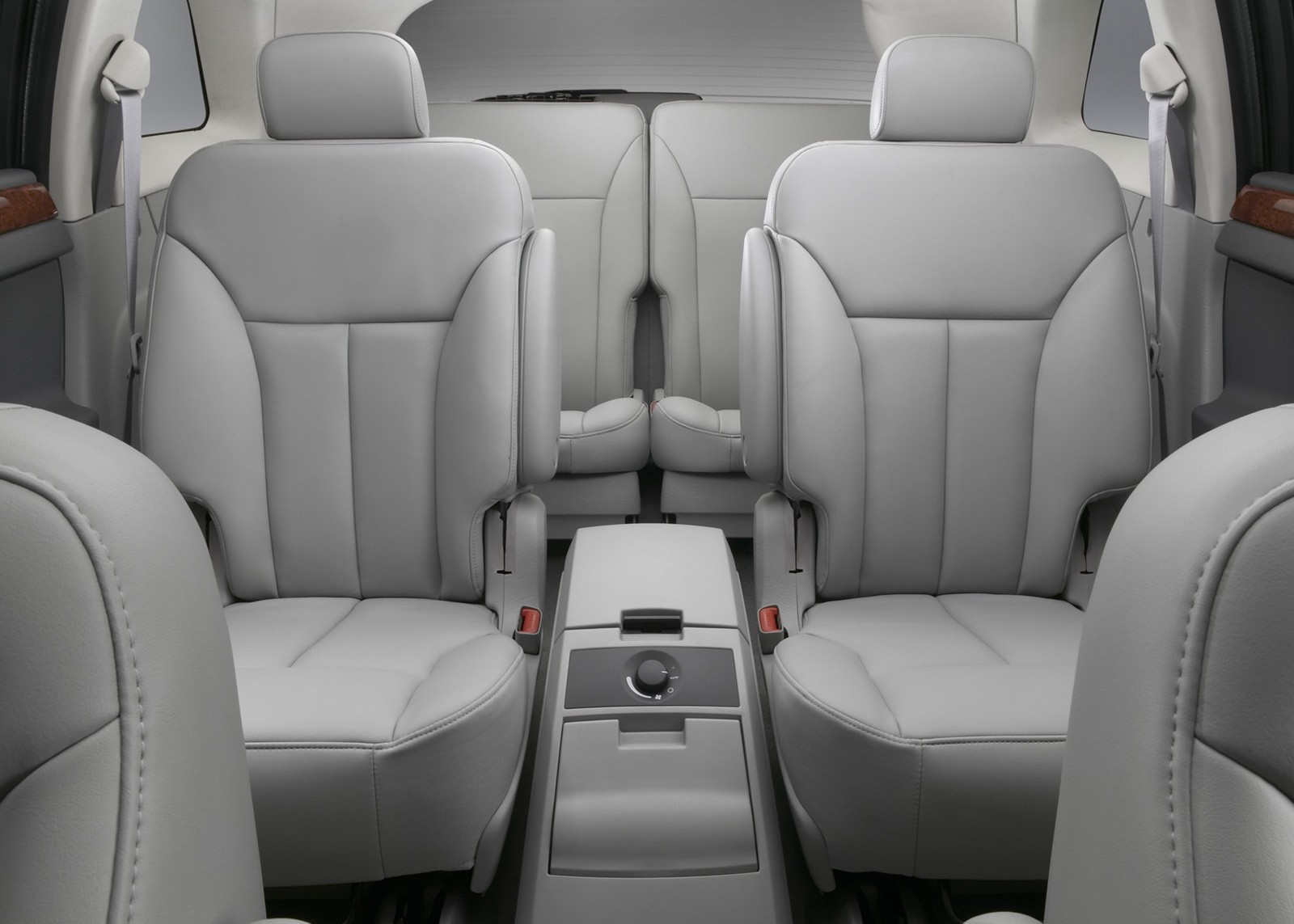
Still, it probably didn’t help. The campaign with Celine Dion reportedly didn’t help, either. According to one report from Autoweek, dealers thought the Celine Dion Pacifica advertisements did more to sell her brand than Chrysler. The automaker abandoned its relationship with the singer only a year into the contract.
Reportedly, Chrysler’s own ad agency warned the automaker not to partner with Celine Dion in the first place. Chrysler wanted affluent young people to buy a Pacifica, but Dion was much more popular with an older audience. Focus groups had suggested that Dion had the most pull with people aged around 52. Perhaps it wasn’t a surprise to anyone, then, that the average age of a Pacifica owner was 53. Oops. At least the ads looked neat:
The Pacifica’s sales never came close to meeting expectations. Only 56,656 examples were sold in 2003, followed by 92,363 in 2004. That year was the closest Chrysler ever came to meeting its goal. Every other year was far south of this. Early on, the vehicle’s high price compared to other Chrysler products and the botched marketing campaign were blamed for the slow sales.
The Press Was Impressed
The press largely had compliments for the Pacifica, but did expose a couple of issues. Car and Driver had mostly good things to say:
Our test car had comfortable leather seats that seemed an appropriate match for the lavish interior design that combines realistic faux-wood panels with silver-colored trim and high-quality moldings. Our vehicle also had a navigation system with its display screen in the speedometer face. That, says Chrysler designers, allowed them to design a conventional console without having to accommodate a large screen that is a blank waste of space when not in use.
[…]
That’s all well and good, but C/D readers are more interested in performance and driving pleasure. In that respect, the Pacifica ought not to disappoint anyone whose priorities drove him or her to a big people mover. Its acceleration times are roughly the same as those of the Lincoln Navigator and not much slower than those of a 3.0-liter BMW X5. Furthermore, the 3.5-liter V-6 seems more than adequate in the cut and thrust of rush hour, even if its high-rpm endeavors occasionally sound a bit labored.
Although the test numbers appear adequate–they’d probably be better in a front-wheel-drive model–it’s obvious that a fully laden Pacifica AWD will have its work cut out on a mountain pass. There’s only so much 250 horsepower can do with a 4720-pound “sport tourer.” Nonetheless, the standard-equipment AutoStick manumatic brings a touch of sportiness to mountain driving, enabling the driver to hold gears and even add engine braking to the repertoire. When in manual mode, the Pacifica will run to the 6500-rpm redline in the lower two gears and will shift up automatically before hitting the 6800-rpm rev limiter. In third gear, for some reason, the system shifts up at 5500 rpm regardless.
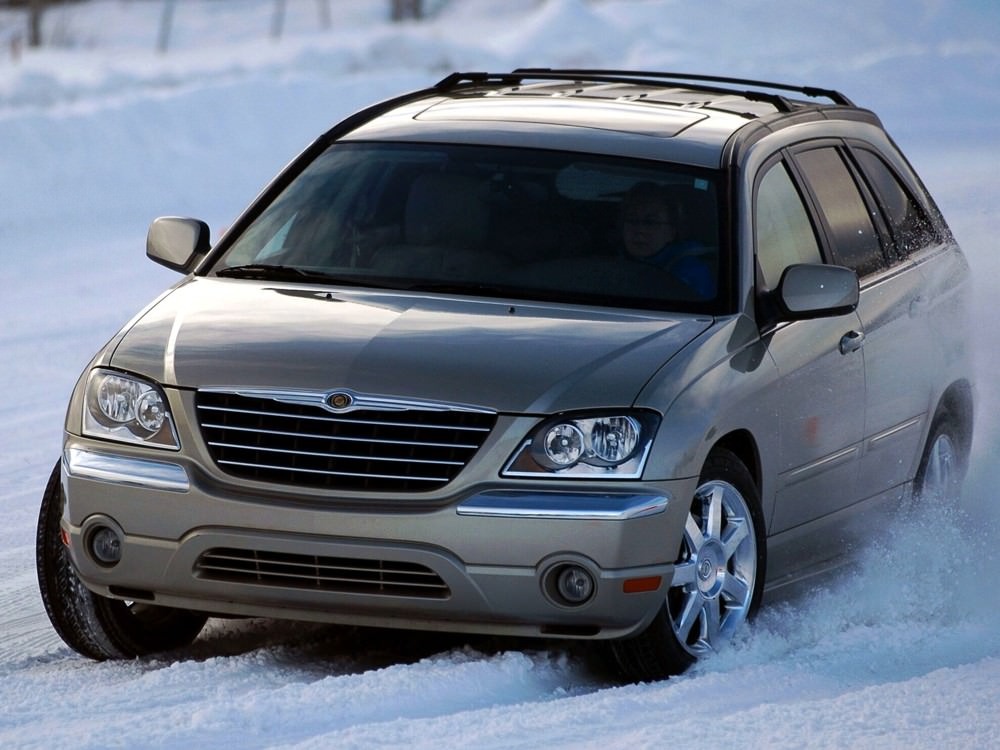
The magazine said the Pacifica handles with “commendable poise” with crisp steering and remarkable urban agility. Car and Driver even went as far as to say, “There’s a real sense of quality in much of what the Pacifica does.” Remember, this was the era of plastic fantastic, so a statement like this is grand.
Car and Driver‘s biggest complaint was with the third row, which it concluded wasn’t really meant for adults. Unfortunately, despite the marketing, the Pacifica wasn’t really minivan practicality and cargo volume with the look of an SUV, but that didn’t seem to matter as much because the press ate it up. The legendary John Davis of MotorWeek seemed to like it, and likened the first two rows to being like flying First Class:
Chrysler made some changes early on, opening the 2005 model year with the LX base model coming in at about $4,000 cheaper. It also got a weaker engine: a 3.8-liter V6 borrowed from Chrysler’s minivans, which made 200 HP and 235 lb-ft of torque. Improvements would come later on in Pacifica production, including the addition of a six-speed automatic transmission and a 4.0-liter V6 that was good for 255 HP and 265 lb-ft of torque.
This wasn’t a huge bump, but did allow the Pacifica to scoot to 60 mph two seconds sooner, which helped to resolve some complaints about the 3.5 V6 being too sluggish.
Sales Didn’t Reach Expectations…
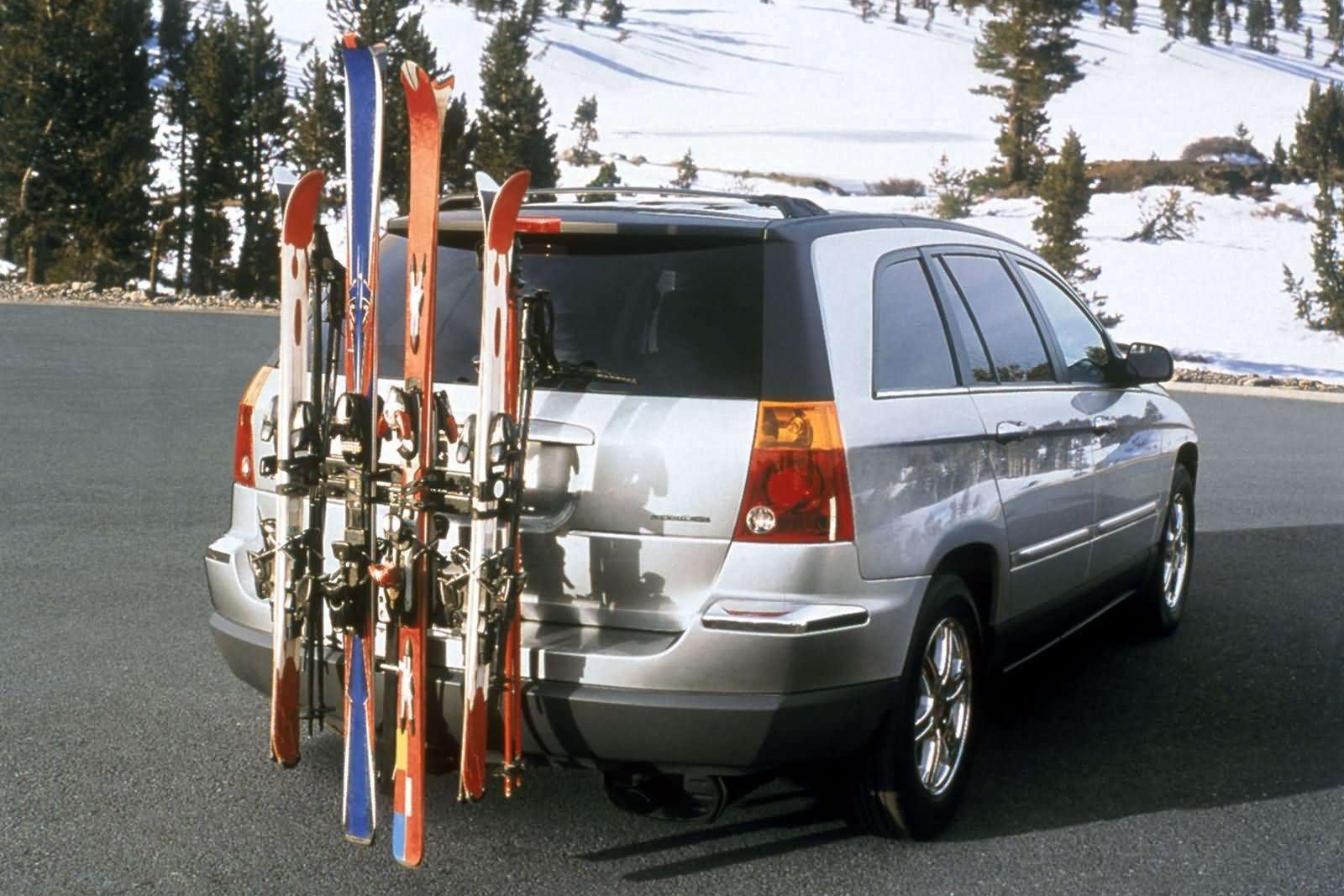
Chrysler would make other changes throughout the Pacifica’s lifespan, but none of them would ever result in sales reaching expectations. The Pacifica would also become known for some quality issues, including interior rattles, electrical glitches, and parts that allegedly fell off. For many, this means that the Pacifica was a flat-out failure. The Truth About Cars wrote an entire rant about the Pacifica’s quality, cramped third row, lack of cargo space, and powertrain. The publication then claimed that Chrysler lost money on every Pacifica sold.
However, I will note that, regardless if Chrysler made money or not, it sold 393,471 Pacificas between its launch in 2003 and its cancellation in 2009. The Pacifica may not have been as popular as Chrysler wanted it to be, but the public obviously liked them. Curbside Classic correctly points out that the Pacifica outsold the Nissan Murano for three years. Meanwhile, the Buick Rendezvous would have killed to have the Pacifica’s sales numbers. Though the Pacifica couldn’t unseat the king, the Lexus RX. Part of that may have been because a loaded Pacifica knocked on the door of the price of a Lexus RX, but Lexus had prestige, and Chrysler didn’t.
…But It’s Still Great
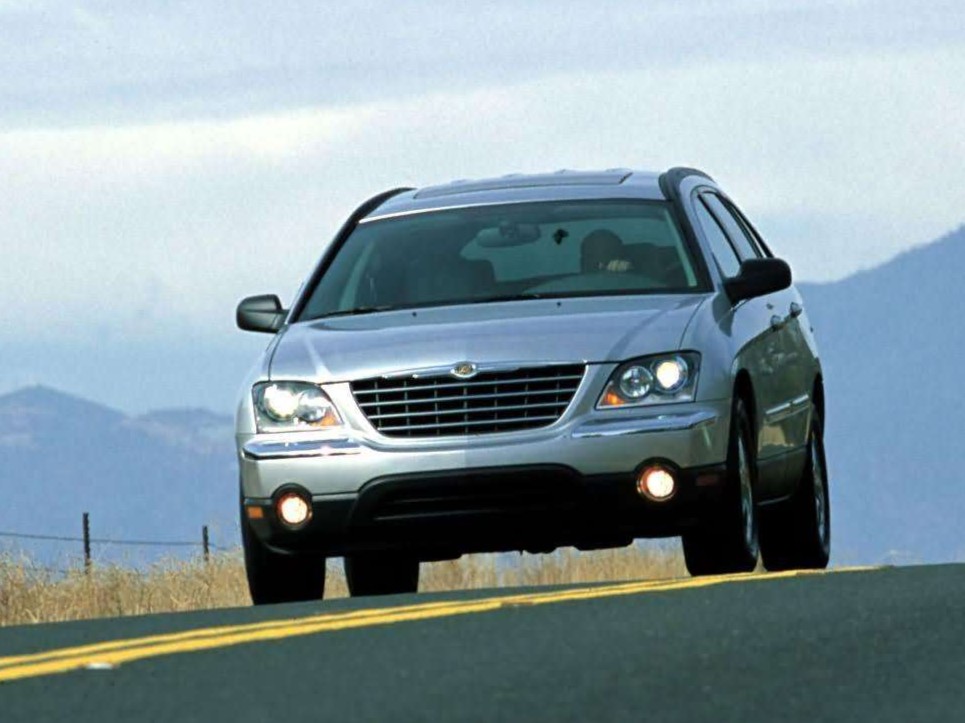
It would be easy to declare the Chrysler Pacifica as an Unholy Fail, and in some ways, the pieces are all there. The Pacifica didn’t meet sales quotas, it was the victim of bungled marketing, and didn’t fully live up to its promises. The vehicle performed so far under expectations that Chrysler never completed that move into the luxury market.
However, I think the Pacifica’s problem was one of timing. Chrysler of the 2000s was known for slinging cars that seemingly had more hard, pebbled plastic than metal. Yet, the Pacifica wasn’t that. I’ve ridden in a Pacifica a few times and it was shocking in how much it wasn’t like other Chrysler products. You really felt and saw the Mercedes-Benz influence in there. It was almost as if there had been an alternate reality Chrysler that was a luxury brand and the Pacifica accidentally leaked out into this universe. Here’s some more Celine Dion:
Chrysler’s brands would straighten up their act a lot during the FCA years. Interiors got much better and the few models that Chrysler had remaining got pretty classy. Now, Chrysler’s brands sell some pretty premium vehicles. I could see something like the Pacifica being in Chrysler’s lineup today. Maybe the Pacifica’s problem was really that it came perhaps a decade or two too soon?
So, I don’t think this really is an Unholy Fail. Instead, I’d call the Pacifica a great, cheap car buy. As I said earlier, you can get one of these for $1,500 if you don’t mind a broken one, and a good one won’t cost you a ton, either. Look at all of those features up there! That’s a lot of bang for not a ton of money. Will it be as reliable as an old Toyota Camry? Probably not. But you’ll probably wow your passengers when they hop into your 2004 Pacifica and get shocked that, yep, this thing is a Chrysler.
I like to think that, in a different world, Chrysler succeeded. The Pacifica, Crossfire, and Celine Dion thrust Chrysler into a premium market. I wonder what its lineup would look like today? I’m not sure, but the Pacifica was a preview for what could have been.
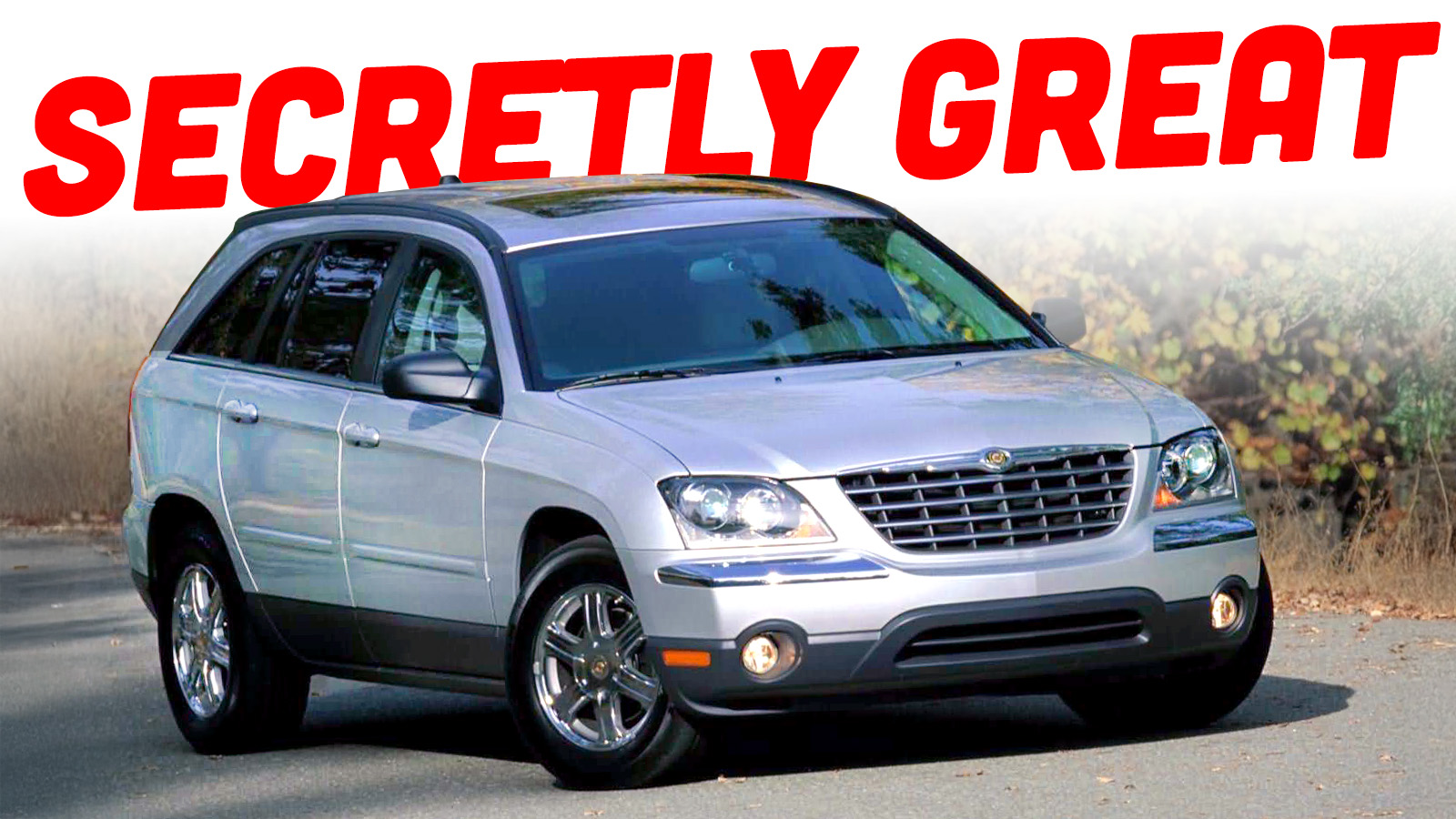



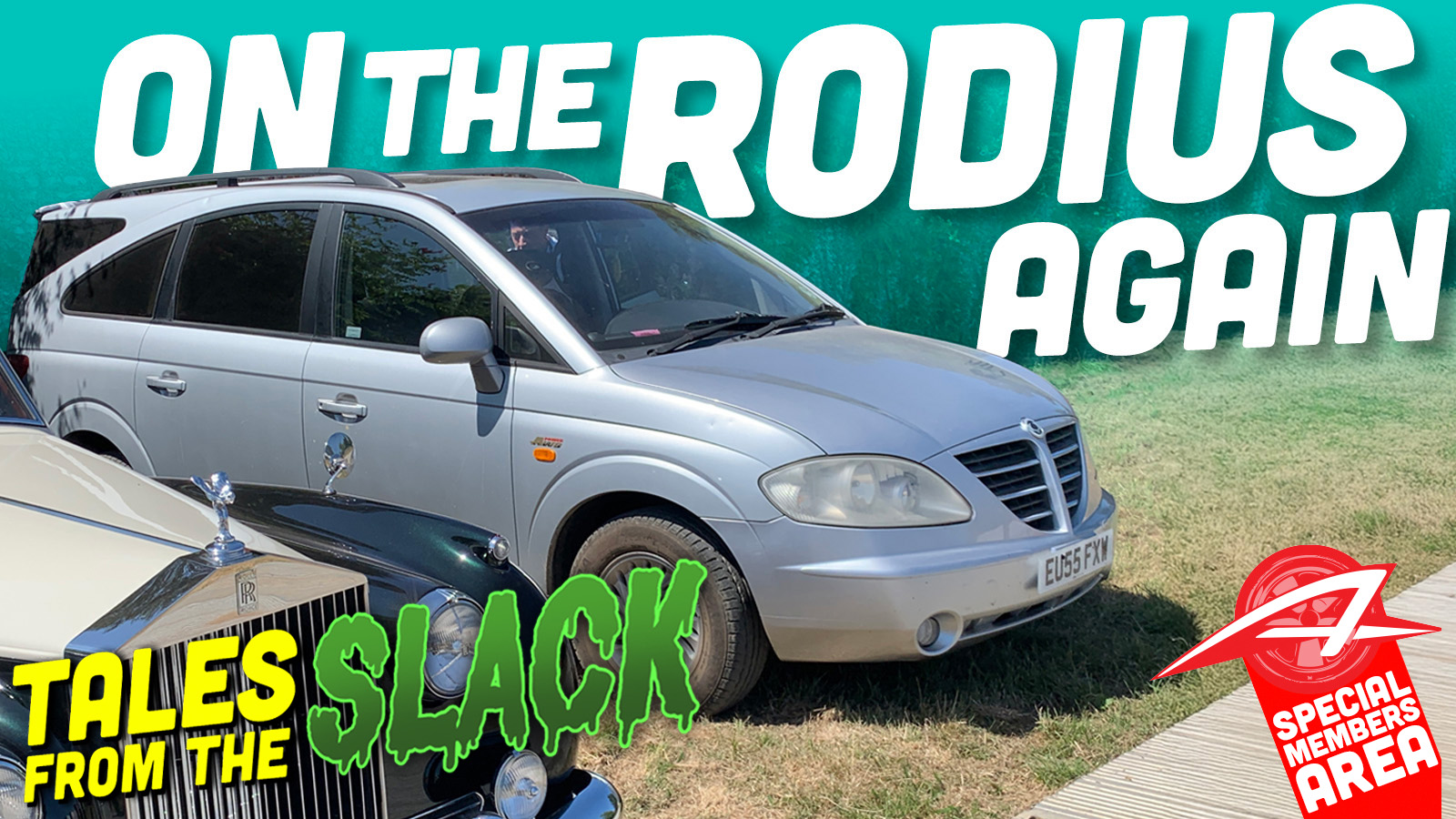

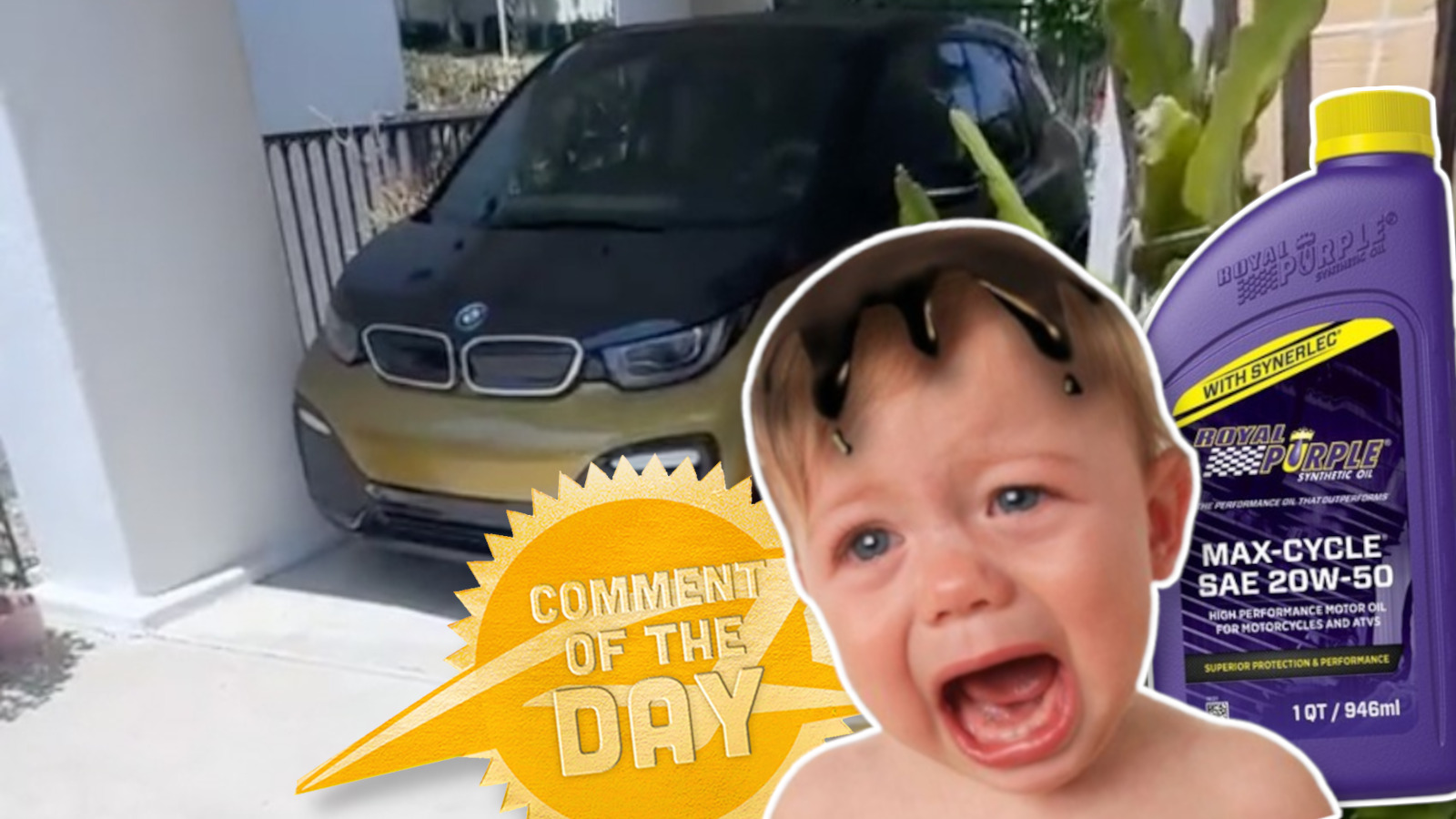
I always liked the way the Pacifica looked but a much more reliable option is the first generation Venza. Get a Limited one with AWD and the upgraded headlights in the later years and you have a pretty good looking car.
I certainly believe you – we had two of these when I was a teenager – an ’04 and a loaded ’06, the latter of which I drove plenty as I was in the process of getting my license (and having just got my license).
The thing that shocked us the most about them was that everything lined up inside.
They really were nice vehicles. And then my mom got an ’08 Avenger SXT after the ’06 Limited…that was quite the demotion.
The closer a CUV gets to being a minivan, the better it is. Had the Pacifica had sliding doors, it would have been a minivan. Oh, wait.
Heard at the time: “How do correctly say the name of the merged company ‘Daimler-Chrysler?’”
The reply: “It’s Daimler. The ‘Chrysler’, is silent.”
In Evansville, Indiana we had a great guy, Dave Duell, who ran the Chrysler-Plymouth dealership. A first class individual who even raced a vintage Dodge (or Plymouth) station wagon at the drag strip. He ran a good shop.
I bought a Plymouth Breeze from him (a good car for what it was, no pretense that it would be as fun as a roller coaster as depicted in the advertisements) right before they abandoned the marquee. I wrote him a letter saying how sad I was to see Plymouth go away. Maybe folks felt the same about DeSoto back in the day.
Little did I know how bad things in the auto industry would get and that I had lived through a golden era.
Another great article, Mercedes.
I remember my Dad got a Pacifica as his company car, fully loaded with the cool cluster Navigation. He convinced us it had “voice activated music control” because of the behind the wheel buttons that we had never seen before. It was roomy, comfortable, and got us everywhere. I remember Steve & Berry’s (cool clothing store) had a Chrysler Pacifica letterman jacket that I bought and my Dad got a matching one. Yeah, we had Pacifica swag.
My Dad was quite upset when he had to let it go, especially since they were putting him into a Dodge Journey… Would love to find a clean example these days but good luck.
“ Meanwhile, the culture at DaimlerChrysler left many feeling like Daimler was sucking Chrysler dry to keep itself afloat.”
And they were right
This was a nice looking vehicle in its day, and with a couple minor tweaks and a newer powertrain wouldn’t be outta place in the market today. A shame they never really took off. In that so called merger of equals it was basically that all of Chrysler’s money at the time was really just there for Daimler to rob and use to enrich Mercedes Benz of the era with the Chrysler side getting the scraps. Little good ever came of that
Discontinuing the original Pacifica and Aspen were Chrysler’s biggest mistakes headed into the SUV era.
Both arrived about a decade too early.
I remember these when they came out, our family looked at one and did think it had a really good looking interior for the time, and exterior was also good.
The main issue was that the 3rd row was a bit too limited on headroom for our purposes, so we passed.
They shouldn’t have offered it as only top-trim at launch, and it should have had more power. Chrysler was trying to go for luxury, but the public wasn’t buying it (literally and figuratively)
My Aunt had one of these. She absolutely adored the thing and literally drove it until the wheels fell off. These were a bit pricey and I suspect that was part of the lowish take rake. Didn’t a couple of model years have Crossfire inspired hood strakes? Another great article Mercedes.
Thank you Mercedes for this piece. This is a criminally underrated vehicle. If Chrysler hadn’t basically closed down – selling but 1 vehicle does not make an automobile manufacturer – the Pacifica could be on its 4th iteration right now and selling 100k units annually.
Fuck my 2025 Maverick can’t even put nav in the cluster
Since when we moved to two cars, and I’m responsible for sourcing big-dog approved beaters for us, this has been definitively on my radar (4.0l awd with the six-speed only). It’s tough to find unbeaten one, and timing didn’t work the one time I did. I dig them. As usual, my dream involves unbolting one captain chair from the second “children” row, so it’s one car seat and one lounge area. Current Aztek does that, but just space instead of third row behind “the children”.
EDIT: based on the comments below…. it may have just gotten off my beater list.
Back in 2009, I had a friend with a 2007 (or whatever the first year of the 4.0L was) loaded Pacifica. One owner, bought new, and what a pile of junk. It was nice…except for all the stuff that broke simply by looking at it. The dash did this really strange separation/warping thing. The switches all just flaked off paint at random…when they weren’t just outright breaking. The seats felt nice, but the stitching came loose alarmingly fast for a two year old car. The shifter had some plastic tab that would break and strand you, so he had a trick with a screwdriver to get it to shift (he joked it was a theft deterrent). The paint work was pretty bad, as was normal, but seemed especially bad for a car at the price point his was at. Oh, and the AWD system had issues with the transfer case and also ate front CVs like mad, and for some reason the ABS sensors built into the hubs would go had before the hubs themselves.
He loved the thing, especially when he was still getting stuff fixed under warranty, but as soon as he crossed the mileage limit of the warranty (he drove back and forth between Minneapolis and Orlando every other month) the thing started becoming a nightmare. He ended up selling it around Christmas of 2009 and picked up a Tahoe, which to his great amusement he said got better highway fuel mileage.
Anytime I see one of these still on the road, I think either the buy-here, pay-here lot just scored another victim or the owner is a masochist.
All of what you said sounds like what I’d expect from these (maybe a little worse, but in the realm). What I didn’t realize, though, was how expensive these were at the time. So yeah, that shit is inexcusable.
My father (R.I.P.) got one when they first came out with the 3.5L base trim. As a highway tourer, it’s fantastic, very comfortable and quiet. With all that weight, it could have used more power though. I thought it looked sharp and it was super practical. So my complaints, the soft dash came unglued and it warped, absolutely awful. The plastics…..so bad, any switches, the black plastic paint came off revealing white plastic on most switches. The plastic parts that held the windows up dissolved into nothing. If you had an AWD version, it was a ticking timebomb. Reliability wise, my dad’s was fine. I’m still a bit sour because I had fixed my dad’s up but then my sister commandeered the vehicle for her son and he trashed it. I’m sure it’s in a junkyard now. :/ Also, Startech in Germany made an awesome trim level/kit for it.
My landlord has a MINT one that he adores. Seems to have held up well.
As always, a very well-researched piece by Mercedes. On the Pacifica, of all things. I find the DCX era fascinating. There is some parallel world where Chrysler never merged and it’s fun to think about what it might look like today.
I remember when the C class and what became the Sebring/200 were supposed to ride on the same platform.
I remember the 200 concept that I think you are talking about. It was beautiful. There was no way the Germans were going to allow that.
I always liked how these things looked. When I worked at my local grocery store carrying out groceries there was a woman who owned and I always liked looking at the interior of it. She was also in her 50s lol.
Honestly, it was ahead of its time. I think if the crossover craze started back then, Chrysler would have killed it. It was the right product for the wrong time.